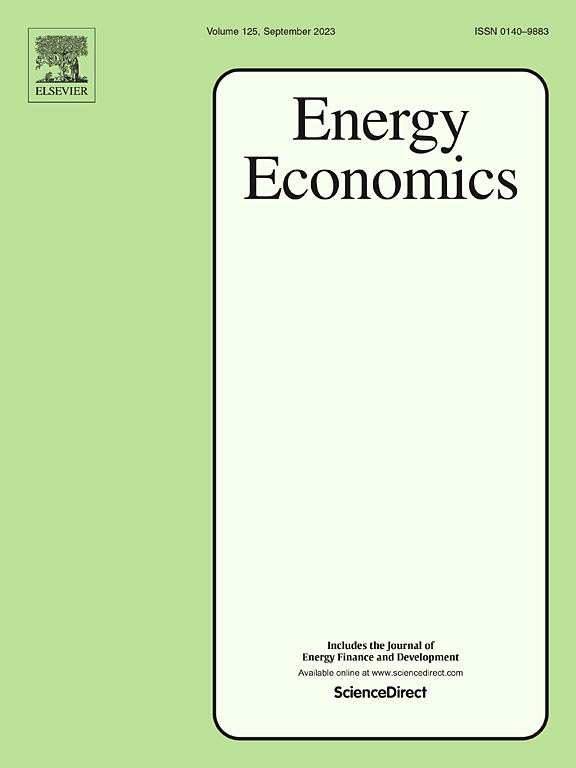A strategic trading model under rate-based emissions trading schemes: Market power, driving factors, and a comparison with mass-based schemes
IF 14.2
2区 经济学
Q1 ECONOMICS
引用次数: 0
Abstract
Some evidence has shown the presence of strategic permit trading, which can reduce the cost-effectiveness of emissions trading schemes (ETSs). In contrast to most strategic trading models that focus on mass-based schemes and assume the existence of price-taking firms, in this study, we develop a two-stage model under a rate-based scheme where all firms are allowed to trade permits strategically by employing the supply function approach. We identify a unique refined equilibrium in permit trading and examine firms’ strategic behavior and the factors influencing market power. We find that both a flatter marginal production cost curve and a larger gap between firms’ emission intensities and the emission benchmark tend to strengthen market power. A similar impact is observed for permit sellers when marginal abatement costs are flatter, whereas the effect for buyers depends on a trade-off between the impact on permit purchases and the slope of the residual permit supply curve. We also conduct numerical simulations of China’s nationwide ETS. The results reveal that the effect of market power on production differs significantly between rate- and mass-based schemes. Additionally, rate-based schemes strengthen sellers’ market power relative to mass-based schemes. Finally, policy implications are proposed to prevent market power.
基于费率的排放交易计划下的战略交易模式:市场力量、驱动因素以及与基于大众的计划的比较
一些证据表明存在战略性许可证交易,这可能降低排放交易计划(ets)的成本效益。与大多数战略交易模型不同的是,大多数战略交易模型关注的是基于数量的计划,并假设存在定价公司,在本研究中,我们在基于费率的计划下开发了一个两阶段模型,在该模型中,所有公司都被允许通过采用供给函数方法战略性地交易许可证。我们在许可交易中确定了一个独特的精炼均衡,并考察了企业的战略行为和影响市场力量的因素。研究发现,边际生产成本曲线越平坦,企业排放强度与排放基准之间的差距越大,市场支配力越强。当边际减排成本持平时,对许可证卖方也有类似的影响,而对买方的影响取决于对许可证购买的影响和剩余许可证供应曲线的斜率之间的权衡。我们还对中国全国范围内的ETS进行了数值模拟。结果表明,市场力量对生产的影响在费率和质量为基础的方案之间有显著差异。此外,基于费率的方案相对于基于大众的方案加强了卖方的市场力量。最后,提出了防止市场力量的政策建议。
本文章由计算机程序翻译,如有差异,请以英文原文为准。
求助全文
约1分钟内获得全文
求助全文
来源期刊

Energy Economics
ECONOMICS-
CiteScore
18.60
自引率
12.50%
发文量
524
期刊介绍:
Energy Economics is a field journal that focuses on energy economics and energy finance. It covers various themes including the exploitation, conversion, and use of energy, markets for energy commodities and derivatives, regulation and taxation, forecasting, environment and climate, international trade, development, and monetary policy. The journal welcomes contributions that utilize diverse methods such as experiments, surveys, econometrics, decomposition, simulation models, equilibrium models, optimization models, and analytical models. It publishes a combination of papers employing different methods to explore a wide range of topics. The journal's replication policy encourages the submission of replication studies, wherein researchers reproduce and extend the key results of original studies while explaining any differences. Energy Economics is indexed and abstracted in several databases including Environmental Abstracts, Fuel and Energy Abstracts, Social Sciences Citation Index, GEOBASE, Social & Behavioral Sciences, Journal of Economic Literature, INSPEC, and more.
 求助内容:
求助内容: 应助结果提醒方式:
应助结果提醒方式:


